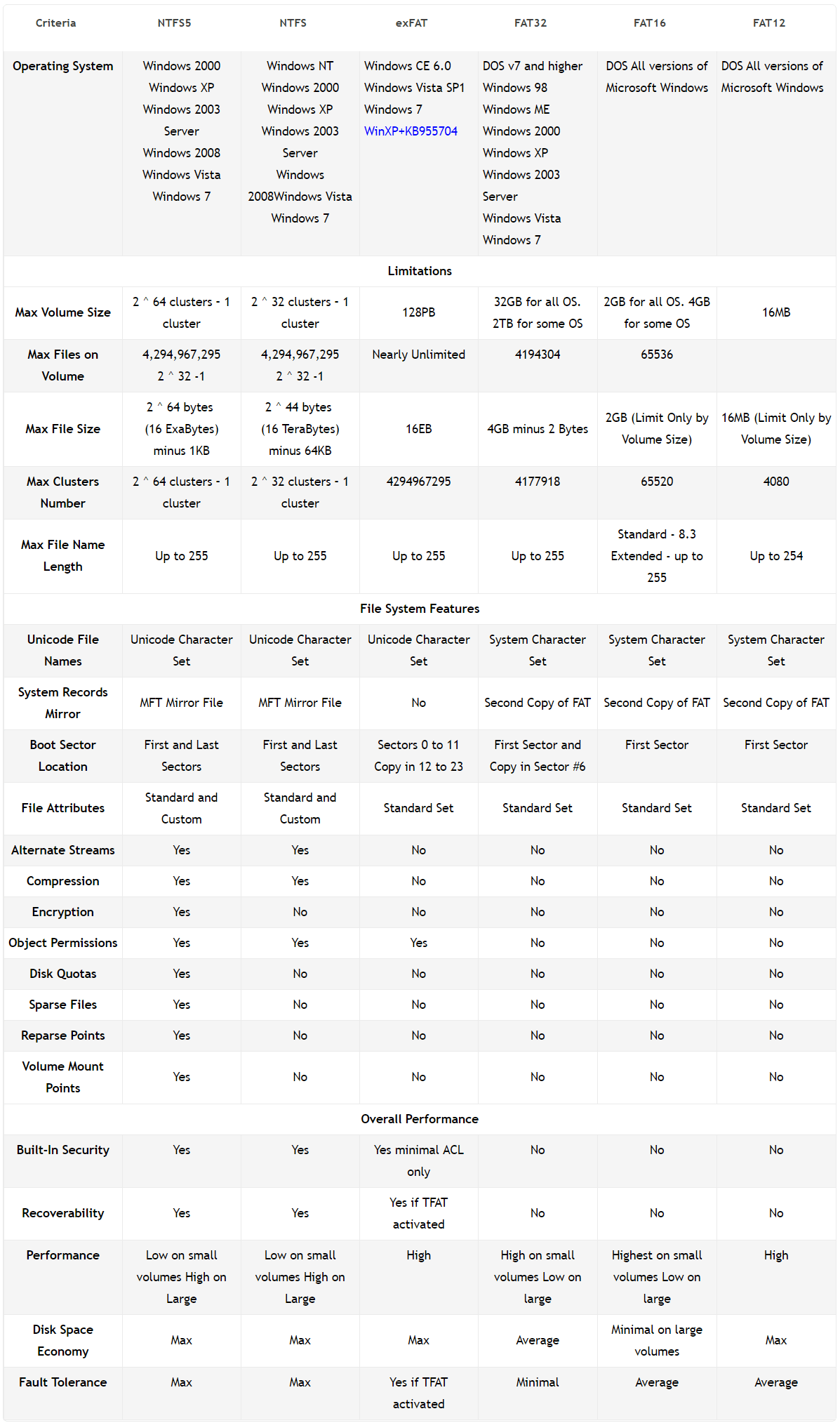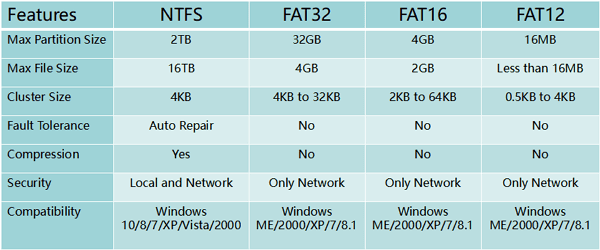
#Ntfs vs fat32 vs exfat free#
Well, I do have a free method for converting FAT32 to NTFS without data loss.

How can I convert FAT32 to NTFS without data loss? However, I have formatted my file system to FAT32 and stored important files in it. Some of you may wonder: I want to use NTFS file system as it has so many advantages.
#Ntfs vs fat32 vs exfat windows#
Besides, recent Windows system partition must be formatted to NTFS file system. If you are using a modern Windows operating system, you’d better format internal hard drives to NTFS. NTFS has more advantages than FAT32 in security, partition size, and file permissions and so on. However, it has limits on file size and partition size, which may cause inconvenience if you want to store large files. NTFS vs FAT32Ĭompared with NTFS file system, FAT32 is more compatible with old operating systems and all kinds of removable storage devices. Be sure not to store a single file that is larger than 4 GB. If you want to use it on removable drives, you’d better format the drive to FAT32. Usage: Flash drives will often be formatted with FAT32 for maximum compatibility.
#Ntfs vs fat32 vs exfat mac osx#
Read-only with Mac OSX by default, and may be read-only by default with some Linux distributions.Compatible with all versions of Windows.No realistic file size or partition size limitsĬons: Not compatible with very old operating systems.Enables users to set disk quotas, limiting the amount of space users can consume.Uses a change journal to help restore information quickly if power failure or other system problems occur.Enables users to compress files, folders or the whole drive when they are running out of disk space.Automatically restores the consistency of the file system by using its log file and checkpoint information.Enables users to set file permissions and encryption as a file system with higher security.Supports very large files and it nearly has no realistic partition size limit by changing cluster size.For detailed information, you can refer to following contents to learn its pros and cons, compatibility and usage.

Nowadays, NTFS is the most widely used file system in Windows, especially for its system drive and most internal hard drives.Īs a modern and advanced file system, NTFS has many features not available to FAT32 and exFAT. Windows NT and Windows 2000 are the primary operating systems using the NTFS file system. NTFS is short for New Technology File System, created by Microsoft and introduced in 1993 with Windows NT 3.1. If you don’t know the differences between NTFS, FAT32 and exFAT file system, don’t worry, this article will tell you what you should know for the three kinds of file systems and give you a brief comparison of NTFS vs FAT32 vs exFAT. If you know them well, you can choose the correct file system for different needs. Each of the file systems has their own pros and cons. And FAT32, NTFS, exFAT are three different file systems commonly used in Windows.



 0 kommentar(er)
0 kommentar(er)
